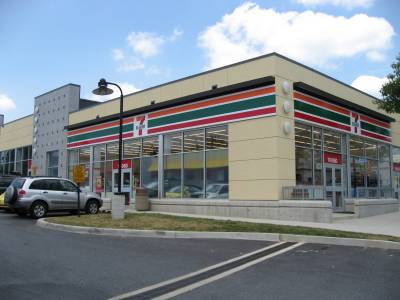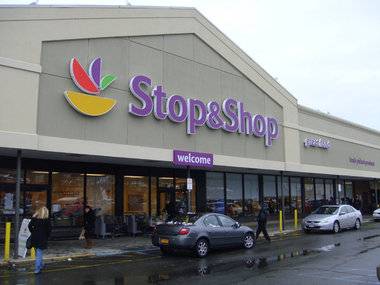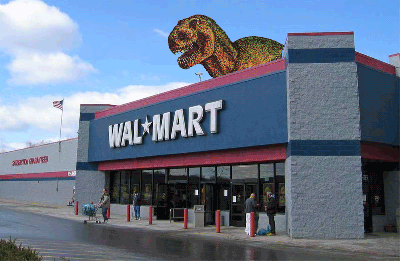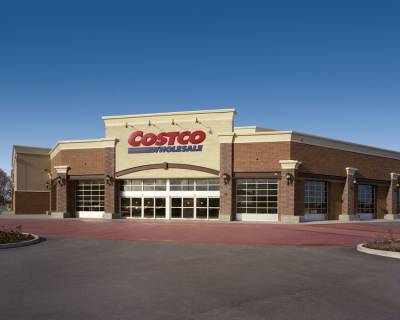Retailing Assignment 2
1: Type Of Food Stores And The Marketing Mix

A convenience store has a very direct retail mix. As oppose to supermarkets, supercenters and warehouse stores do not need a large conventional location (hence the name “convenient”). Often, the best location for a convenient store can be a corner off a highway with relatively easy access to anyone that needs a “last second item”. Prices can often be much higher than supermarkets, supercenters and warehouse stores due to the fact that convenient store ideology is centered on convenience (how far would someone have to go to get milk parse) rather than competitive price. Merchandise assortment is similar to some supermarkets, supercenters and warehouse stores , however the assortment is sold from limited vendors and is often comprised of essentials such as bread and milk(along with less necessary but tempting products such as junk food and alcohol).Advertising as opposed to supermarkets, supercenters and warehouse stores is often completely unnecessary. Word of mouth is the prevalent method of advertising convenient store (like sometimes people will be like “oh, g pick up [product] at the convenient store, we don’t have time to go to [supermarkets, supercenters and warehouse store]”). Promotion again, falls under “advertising” and since they are intertwined, perhaps the best promotion is large banner on the store itself (often those large signs, even though deceptive, will lure in people). Store design and service is very limited, customer service is practically non-existent (the antithesis of supermarkets, supercenters and warehouse stores). There is often relatively no need for anyone to ask where something is in a convenient store due to rudimentary , simplistic designs (often simple small square buildings with glass refrigerated units in the back and merchandise in the middle , no navigation signs are even needed). Convenience stores rely heavily on simplicity and the ability of a customer to walk in and see nearly all the merchandise without having to walk to it. A great example of a convenience store is 7-eleven. You never see commercials for these guys , but you see them in random corners everywhere you go (Mass).

Supermarkets have a more customer-oriented retail mix since they often compete heavily with each other , and often also play with much larger numbers than convenient stores (although not as high as supercenters , but often nearly the same as warehouse stores per annum). Locations for supermarkets are extremely important. As oppose to warehouse stores and convenient stores, accessibility and visibility is crucial for the survival of a supermarket. If a supermarket does not find a strategic location initially, they are very often doomed to fail. Price, much like with warehouse stores and supercenters is crucial (almost as important as location) in the longevity and success of a supermarket. As we have recently seen with Shaws (formerly star market) , having inflated prices for similar product line-ups to competitors is a recipe for disaster. Not only does it make people initially confrontational emotionally upon entering the store, but it is a failed promotional technique due to the heavy effect and influence of word of mouth in the modern world (ie a Shaws shopper might tell his wife’s friend that the prices there are ridiculous, and to go to a competitor that’s just slightly further away for a better deal). Merchandise assortment is extremely vital to a supermarket’s core foundations. The effective utilization of products customers want to buy and the relative variety of buyable products can make a supermarket “sink or swim”. Having multiple brands of similar products with different prices (house vs trademark) is HEAVILY emphasized. This is never the case with convenient stores or warehouse stores (but it can be utilized by supercenters). Having house brands is also a form of advertisement (as people might be tempted to buy something someone is consuming after seeing the label). Variety also gives people the impression that they have a “choice” in their decision (even though that is often completely false since both items could be manufactured at the same factory side by side). Store design and service is , once again, very important. Supermarkets are often large, complex structures with navigation signs to aid customers to the proper sections (allowing them to find items they seek). However, customer service is crucial in pinpointing the exact product a customer desires, this often goes a LONG way in preserving customer loyalty. Warehouse stores and convenient stores do not rely on this too much, but supermarkets absolutely do. Advertising and promoting are very important to supermarkets. Again, since competition is so fierce, constant promotion and advertising of price, quality and reputation are essential for customer recognition and loyalty. Often something catchy or redundant (commercials) can help people remember a supermarket’s name. A great example of a supermarket would be Market Basket , they have the retail mix down and are peering ahead of their competition due to low prices and amazing customer service.

Supercenters such as Walmart have a very similar retail mix to supermarkets (especially in regards to selling food items). Location for superstores is often actually (and not surprisingly) not that important. Often , superstores will be isolated from other commercial centers. Superstores are often not part of malls or shopping centers like supermarkets are. This is important to note because superstores are NOT niche markets. They do not only sell food like supermarkets, but also just about everything else. This means that practically anything you put next to a [ie] Walmart will be in direct competition with them. Supercenters strategically isolate themselves to preserve a customer base. Prices in supercenters for most items have to be lower than “fair market value” to attract potential customers. However, in competitive fields such as cell phones and food, the prices can be relatively similar or slightly above competitors’ prices. Why? Because sometimes, much like convenient stores, the convenience of the “one stop shop experience” is too tempting to ignore. It’s just human nature to sometimes be lazy and make one trip rather than two or three, and people are always willing to pay extra (negligible) for convenience! Store design and service as supercenters can be disorganized (as is often the case) due to the immense variety of product and the immense waves of humans that storm the entrance 24/7 (as many supercenters operate 24 hours a day). However, it is still important to note that products must be implemented by category, and then sub-sectioned further to help guide customers to a product even when associates are not available to assist. Supercenters are the beasts of the retail world and that often creates a huge issue with product knowledge of employees. Often , when walking into a supercenter, the best thing a customer can do is “browse around” and learn where everything is relatively kept. Unlike supermarkets and warehouse stores, the customer should have a better understanding of the products in the store and should never expect the endless waves of purgable employees to assist beyond pointing to a relative location. Merchandise assortment is ridiculously high. If I made a scale here out of all four retailers, the assortment at a supercenter would be off the charts. This does create an issue for the employees, management and everyone else operating the supercenter, but we have to admit the product assortment in supercenters is enormous (and often confusing). Promotions and Advertising are huge for supercenters. Supercenters need to emphasize low prices on certain items to drag in customers and “first-timers” , and that is when the inadvertent and unconscious retail trap activates , and those people end up walking out with 200$+ of merchandise…

Warehouse stores such as Costco have a very unique retail mix. Warehouse stores do not rely on location at all (as most Costco stores are located in the middle of nowhere with no visibility whatsoever). Warehouse stores have a limited but unique merchandise assortment. Often, the trick is that everything bought here is done in bulk. The prices are intermediate; often they are a “good deal” for your money. Store designs might look cheap, but warehouse stores do an amazing job of making merchandise easy to locate. Also as oppose to supercenters, employees are always knowledgeable and readily available to assist customers, eliminating confusion and improving the customer experience. Promotion and advertising comes in the form of product catalogues(often still physical mail), and of course , memberships. Memberships make customers more apt to return after purchasing a membership.
Abstract: Every one of these types of food retailers is uniquely created to address a different crowd. Supermarkets are still in the lead, and the advent of things like self-checkout and even buying online and picking up at the stores (also home delivery) will probably keep supermarkets in the race for years to come Convenient stores have no competition other than other convenient stores , this will keep them alive in the foreseeable future as well. The will of some to buy in bulk and the effectiveness of vip-style memberships will keep wholesale stores in the race for at least another 20 years. However, even though the age of the superstore looks bright, I personally think they will be a relic with the onset of the digital age (amazon above all). They are simply too uncontrollable at the moment to survive. Statistics show a huge rise in supercenter profits, however everything that goes up so steep must eventually come crashing down. At the moment, everything can coexist, however wholesale stores and supermarkets cannot coexist with supercenters effectively. One or the other will eventually go(100 years).
2: Franchise 500
-I have visited subway and 7-eleven. I have been completely aware that these are indeed franchises. Franchises are easily identifiable by their frequency of locations, similar layouts and similar product lines.
-When looking at 2013 on franchise 500, I’m surprised McDonalds has plummeted completely off the top 10 list in 2014, mostly because I see these everywhere I go.
-In order to get on franchise 500, a company must submit a full Franchise Disclosure Document (FDD) or Canadian Disclosure Document which must be verified by an independent 3d party. A franchiser must have 10 separate locations to be listed on the franchise 500.A company cannot be filing bankruptcy to be listed. Companies are judged by objective, financial strength and stability, growth rate and size of the entire franchise system.
-The nature of the businesses that land here are successful, expanding and have wonderful customer reviews. Companies that have plummeted from the list have either negative reputations, or are increasingly less necessary. Jiffy Lube’s failure however confuses me.
-The nature of businesses that become franchises is hard to detect. Just based on personal knowledge, it appears that they have nothing in common. From hotels, to gyms , to service and gas stations. I guess the more common thing they have is individual success and the core owners decided to expand their operations to gain higher financial status.
Source: “https://www.entrepreneur.com/franchises/franchise500/about.html”
3 Associations Of Retail (Updates)
NFR
According to “https://www.nrf.com/ “, retail sales in the USA are expected to climb by 4.1% in the year 2014. This is based on a projected labor market increase of about 9%, and a 2.5 trillion dollar increase to the GOP. Apparently, there will be an average economic growth of almost 2% this year, which means more money will be lining the pockets of customers!
My reaction: I don’t exactly see this happening. From most , more prominent sources , the labor market is predicted to continue to decline , where are these 2.5 trillion coming from?
According to “https://www.nrf.com/ “, there will also be a brighter future for small retailers. There will apparently be lower payroll taxes, lower gas prices and the potential to crush a bill designed to end extended unemployment benefits (reversal). Apparently, this is great news for small businesses that will be seeing a lesser financial strain on their income and increasingly more customers with more money to spend.
My reaction: The decrease in payroll taxes is a controversial step , however it does work to stimulate the economy by expanding employee’s buying power and allowing businesses to save some money as well (this allows for allocation for expansion perhaps).
FMI
www.fmi.org Is stating that the retraction of Patient Protection and Affordable Care Act will align full time employees to new business standards. Apparently, this will allow superstores and wholesalers to keep varied schedules and provide better healthcare to their full time and seasonal employees.
My reaction: if healthcare is garnished from wages , how can you possibly provide healthcare for seasonal workers without cutting their pay significantly?
FMI also recently distributed an article that stated the foreign supplier verification programs for importers of food for humans and animals and accreditation of third-party auditors bodies to conduct food safety audits and to issue certifications proposed rules had finally been submitted to the FDA by the food industry. This is apparently in an effort to prevent the import of tainted products (including the recent case with Chinese apple juices) from entering U.S. markets. Apparently, more often than not, there are no standards for certain chemicals in products (even if they do prove to be dangerous). Furthermore, foreign “inspectors” will often skew their apparent inspections and allow tainted food to be exported in exchange for a nice bag of money. These new proposed rules should strengthen the quality of imported food items and make them safer for human consumption.
My reaction: If corruption is the main issue, how are these products making it onto U.S. retail shelves and into the hands of the American people? Are our inspectors also on someone’s payroll other than the government?
NACDS
NACDS has launched a campaign promoting exchange-based insurance coverage. NACDS has quoted that this will improve the overall customer experience at pharmacies (retailers) because the customer will be more informed on exchange rates and copayments. NACDS believes that this can be further improved by on-sight experience. As a direct result NACDS will be conducting first-hand research with this experimental process, acquiring customer feedback, and subsequently furthering an improvement policy to better the customer experience!
My reaction: Ibelieve this is a step in the right direction. This will ultimately increase the buying power of people that are in need to pharmaceutical medications covered by exchange-based insurance.
NACDS is promoting the use of medication therapy management for seniors for better, more affordable healthcare for seniors. This will indirectly affect pharmaceutical retailers by increasing their line of income from their most profitable customer base (people over 45). Often, when insurance pays the costs of pharmaceuticals, seniors are more likely to buy medications.
My reaction: I see a very strategic victory here for pharmaceutical retailers, this expands their ability to gain even more income from people that are already loyal customers.
NACSONLINE
Well known manufacturer of the legendary Keurig brewer is working in conjunction with coca cola co. to produce a cold drink brewer. The new brewer promises to bring the comforts of trademarked up-scale(not exactly) drinks to the modern home. Drinks like Sprite, Coke and Fanta will now come in a dry mix k-cup which you can simply insert into the new machine, and with a bit of filtered water you will have coke!
My reaction: The cold drink brewer will allow anyone to make soda at home. Although there is already competition in this field , bringing trademarked brand-name cups will be a huge seller.
Nice And Easy partnered with the national kidney foundation. The joint effort will see a percentage of all profits made by Nice And Easy go towards helping the kidney foundation. The national kidney foundation is centered in new York and helps to prevent the contraction of kidney problems as well as effectively researching methods to treat known issue.
My reaction: This is a great way for a company to remain ethical and reduce its income tax! It also works wonders in creating a more loyal and supporting customer base.
(c) The Order Of The Iron Phoenix 2012-2014 all rights reserved
When you subscribe to the blog, we will send you an e-mail when there are new updates on the site so you wouldn't miss them.

